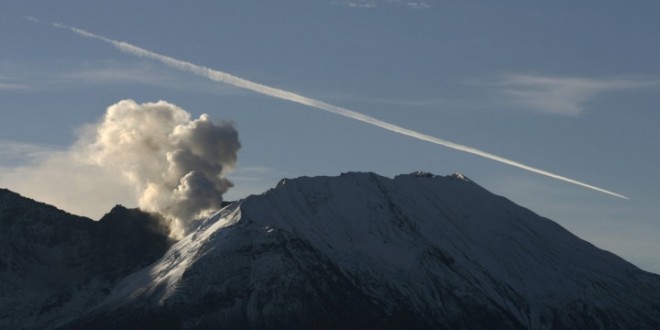Mount Saint Helens is showing signs of reawakening as a preamble to erupting, reports the USGS ten years after the last sign of volcanic activity.
Mount Saint Helens last erupted ten years ago, after recharging for about 19 years. Ewert says that’s a typical timeframe for a volcano to build itself back up. Some volcanoes, however, can sit quietly for hundreds or thousands of years before they move toward an eruption.
In 2004, geologists had about a week’s notice of a burst at Mt. St. Helens. Over the weekend in Japan, there was no sign Mount Ontake would erupt. Ewert says that was a small event, but it became deadly since so many people were hiking on the mountain.
John Ewert, a scientist in charge at the USGS Cascades Volcano Observatory, and other scientists are working on a new experiment, called Imaging Magma to look underneath St. Helens. Current technology lets researchers look about six miles under the volcano surface. This new project could take them 20 miles deep, and give a better understanding of what happens inside.
The project won’t be done for several more years, but Ewert compares it to an MRI. His research team hopes to learn more about the systems inside Mt. St. Helens, and where magma accumulates.
From the outside, we might only see some occasional steam coming from the mountain. Inside, it’s one of the most active volcanoes in the world.
Eventually, Mt. St. Helens will rebuild its peak, and look like it did before the big eruption in 1980. That process will take many years, and most of us living in the Northwest today will never see it completed.
Agencies/Canadajournal
 Canada Journal – News of the World Articles and videos to bring you the biggest Canadian news stories from across the country every day
Canada Journal – News of the World Articles and videos to bring you the biggest Canadian news stories from across the country every day



